The Allure of Whitewashed Bathroom Vanities
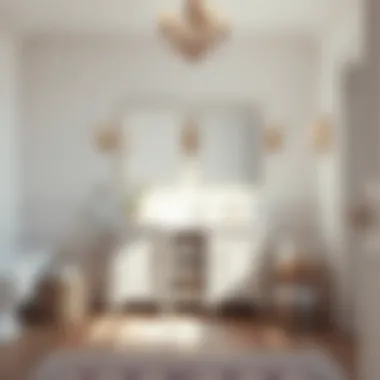
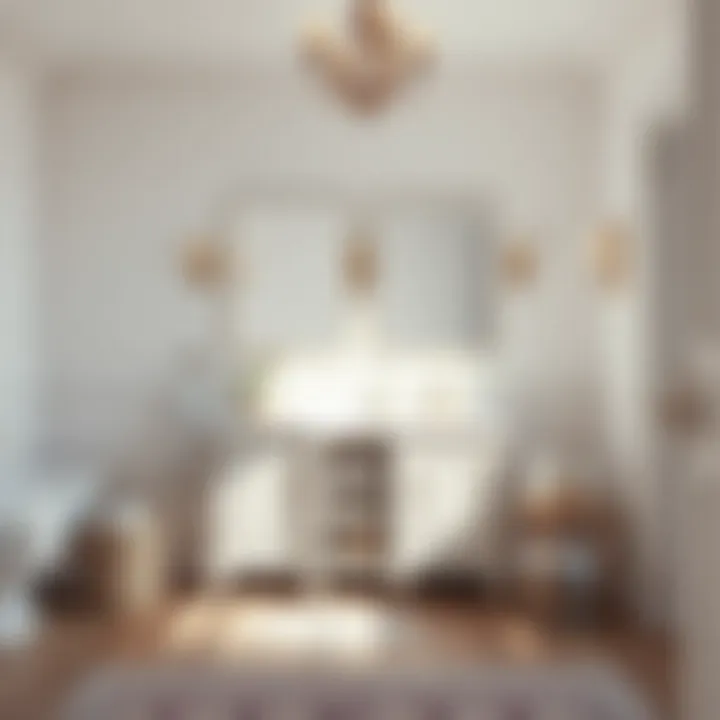
Intro
Whitewashed bathroom vanities have emerged as a beautiful blend of style and utility, making them popular among homeowners and interior design enthusiasts. These vanities are not just a storage solution for toiletries and bath essentials; they elevate the overall aesthetic of bathroom spaces. The transformation they can bring to a room is striking, providing a refreshing, bright, and clean look that can adapt to various design themes.
This article dives into the compelling world of whitewashed vanities, examining how they can enhance both functionality and aesthetics in a bathroom setting. We will explore the latest design inspirations, from trends that are redefining modern bathrooms to color palettes that complement these vanities beautifully, ensuring that your space feels cohesive and inviting. Additionally, we will discuss functional elements that can optimize the use of these vanities, including space-saving tips and multi-functional furniture options that work seamlessly together.
In essence, understanding these dimensions helps not only in creating a visually appealing environment but also in realizing the practical benefits that come with integrating a well-designed whitewashed vanity into your home.
Let’s delve into the realms of design inspirations and functional aspects that make whitewashed bathroom vanities a sought-after choice in today’s contemporary homes.
Preface to Whitewashed Bathroom Vanities
Whitewashed bathroom vanities are becoming a staple in many homes today. They fuse both aesthetic charm and practical utility, leading to a trend that is likely here to stay. When considering a renovation or stage of home improvement, the vanity often becomes the focal point. It not only serves a functional purpose but also sets the tone for the entire space. Thus, understanding the attributes of whitewashed vanities becomes paramount for homeowners and design aficionados alike.
These vanities, characterized by their light, airy feel, help to create a serene and inviting atmosphere. They work wonders in brightening up often cramped or dimly lit areas, making bathrooms appear larger and more open. As a result, many people have noticed the positive impact they can have on overall mood and environment in what can otherwise be a mundane space.
Historical Context and Evolution
The roots of whitewashing can be traced back centuries, originating from the practical needs of preserving wood and making spaces feel cleaner and brighter. Traditionally, homeowners would apply a mix of water, lime, and pigment to protect their wooden fixtures from moisture while giving them a lighter appearance. Fast forward to today, and the style has undergone a transformation.
The modern interpretation of whitewashed finishes plays on both the vintage appeal and contemporary aesthetics. Homeowners are increasingly mixing old-world charm with current-day functionality, leading to a unique blend that caters to varying tastes. Rather than merely being utilitarian, these finishes are now viewed as a form of art in their own right.
The Modern Trend of Whitewashed Finishes
Today, whitewashed vanities are synonymous with minimalism and clean lines, frequently embraced in designs that celebrate natural light and uncluttered spaces. This trend can be attributed to the rise of lifestyles focused on simplicity and relaxation. Many homeowners are searching for ways to simplify their lives, and the aesthetics of whitewashed finishes resonate with this desire.
Crafting a balanced look, they complement various decorative elements, making it possible to harmonize with copper fixtures, natural stone countertops, and even bold tile work. The versatility they offer is something that makes them stand out in numerous design systems, from coastal chic to rustic farmhouse styles.
"Whitewashed vanities not only reflect light but also create a canvas, allowing other design elements to po p in a beautifully orchestrated manner."
Ultimately, the combination of functionality, aesthetic appeal, and adaptability positions whitewashed bathroom vanities as a top choice for today’s discerning homeowners.
Key Characteristics of Whitewashed Bathroom Vanities
The allure of whitewashed bathroom vanities extends beyond mere aesthetics, penetrating into the functional essence of any bathroom. An informed choice stipulates an understanding of key characteristics, such as color, texture, and material. Here is why these features play a pivotal role in shaping your space.
Color and Texture
The color and texture of whitewashed vanities serve as the foundation for their style. The whitish hue, often combined with a soft and distressed finish, offers a tranquil backdrop that can make smaller bathrooms breathe and larger spaces feel more welcoming. The textured surface adds depth, transforming an ordinary cabinet into a dialogue starter.
The versatility of whitewashed finishes allows for easy coordination with other hues and materials in your bathroom.
"A well-chosen vanity can make a cramped space seem open, while also adding a dash of elegance to your decor."
Material Selection
The material from which a vanity is constructed tremendously influences its durability and look. Among the most popular materials are wood, composite materials, and laminate finishes.
Wood
Wood has a time-honored reputation in cabinetry due to its natural beauty and resilience. One specific aspect of wood is its ability to absorb moisture while maintaining structural integrity, which is particularly important in a humid environment like a bathroom. What sets wooden vanities apart is their rich, organic variations that bring a unique charm to any space.
However, while wood offers excellent longevity, it necessitates regular maintenance to fend off water damage and warping. Yet, for many homeowners, the warmth and character wood adds to a bathroom far outweigh the upkeep tasks.
Composite Materials
Composite materials, such as MDF or plywood, are becoming increasingly favored in vanity construction. One key characteristic of composites is their resistance to warping, appealing to those who desire low-maintenance solutions. They can mimic the look of wood while often being more affordable and lighter, making them easier to install.
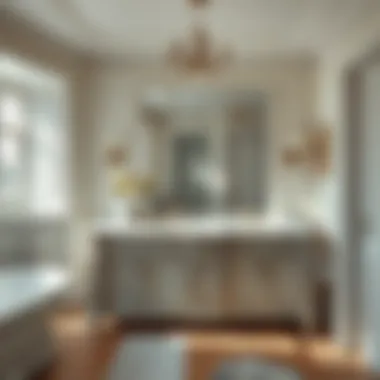
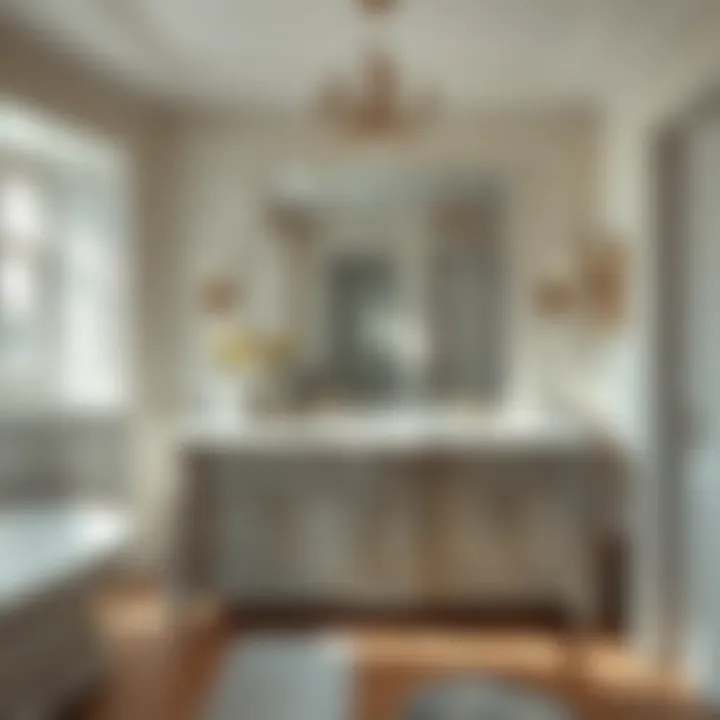
What’s unique about composite materials is that they can be crafted into elaborate shapes that may be challenging to achieve with solid wood. Nevertheless, they may not always convey the same upscale feel and durability as solid wood, which can be a consideration for some homeowners.
Laminate Finishes
Laminate finishes can offer the appearance of high-end materials at a fraction of the cost. One specific aspect of laminate finishes is their incredible range of designs, including those that replicate the texture and look of natural wood or stone. This feature has made laminate a popular choice for budget-conscious homeowners wanting an upscale appearance.
The advantage of laminate is its resistance to scratches and stains, translating to easy upkeep. However, it’s essential to consider that while attributes like cost-effectiveness are appealing, laminate can devalue in the eyes of potential buyers compared to real wood.
Understanding these characteristics helps guide a homeowner's choices when selecting a whitewashed bathroom vanity. Ultimately, the key is balancing personal style with practical considerations to achieve a lasting and harmonious bathroom design.
Benefits of Choosing Whitewashed Vanities
Whitewashed bathroom vanities have gained popularity in recent years due to their unique blend of aesthetics and practical utility. They not only enhance the visual appeal of a bathroom but also serve functional purposes that can benefit homeowners. Let’s delve into the key advantages these vanities bring into any bathroom setup.
Enhanced Brightness and Space Perception
One of the primary benefits of whitewashed vanities is their ability to brighten a space. The lighter finish reflects natural light, making smaller bathrooms feel more expansive and airy. This transformation can create a welcoming atmosphere, which is especially important in areas typically used for relaxation.
Moreover, when paired with light-colored walls or tiles, the effect of an open space becomes even more pronounced, almost as if the room is breathing. This feature can be pivotal for those living in compact apartments or older homes that may not have abundant square footage.
Versatility in Design
The versatility of whitewashed vanities is yet another reason homeowners are drawn to them. They seamlessly integrate into various styles and decors, making them a favored choice in design.
Compatibility with Various Styles
Whitewashed finishes perfectly complement a range of interior design styles — from rustic farmhouse to chic contemporary. This adaptability is one of their key characteristics. For homeowners, this means that a whitewashed vanity can grow with their personal style and changing tastes.
For instance, if a homeowner initially furnishes their bathroom with a coastal theme featuring light blues and sandy beige, the whitewashed vanity will harmonize effortlessly. Later on, if they decide to shift to a more minimalist approach with sleek lines and neutral palettes, the same vanity can still work its magic without a hitch. This multifaceted compatibility is a significant advantage for those who prefer not to overhaul their spaces frequently.
Adaptability to Changes in Decor
An equally compelling aspect of whitewashed vanities is their adaptability to changes in decor. When it comes to updating a bathroom without breaking the bank, keeping a whitewashed vanity allows for easy switching out of accessories or color schemes without necessitating a complete redesign.
Whether a homeowner wants to add bold colors with vibrant towels or switch to a calmer aesthetic with soft pastels, the whitewashed finish provides a clean slate that complements all. This flexibility not only ensures that the vanity remains timeless, but also allows for minimal financial commitment when a change in style is desired.
"The beauty of whitewashed vanities lies in their capacity to evolve with your space, providing a solid foundation for creativity and personalization."
Therefore, whitewashed vanities not only elevate the bathroom's aesthetics but also offer unparalleled versatility, ensuring they remain a relevant choice in evolving design landscapes. Considering their ability to brighten spaces and adapt to changing styles, it’s no surprise that they have become a preferred option for many homeowners.
Incorporating Whitewashed Bathroom Vanities into Design Schemes
When it comes to crafting an inviting bathroom, the integration of whitewashed vanities is nothing short of transformative. Not only do these vanities bring an air of elegance, but they also enhance the tailored functionality sought by homeowners. Incorporating whitewashed bathroom vanities provides numerous benefits, including their suitability for various design schemes, compatibility with different colors, and their inherent ability to blend seamlessly into existing decor. This section dives into several popular styles that effectively complement whitewashed finishes, illustrating how these choices can elevate living spaces into beautiful sanctuaries.
Coastal and Beach Styles
Whitewashed vanities resonate perfectly with coastal and beach styles, evoking a refreshing atmosphere reminiscent of sandy shores and ocean breezes. The light hues of whitewashed wood help create an airy feel, making smaller bathrooms appear more spacious and open. Consider pairing a whitewashed vanity with hues inspired by the sea, such as soft blues and gentle greens. Adding coastal-inspired decor, like nautical elements or sea glass, can harmonize with the soft finishes of the vanity.
For a more cohesive look, contemplate floating shelves or natural fiber rugs that anchor the space while keeping with the coastal theme. The minimalist nature of whitewashed designs allows for easy changes in accents, a great advantage if you want to refresh your design throughout the seasons.
Farmhouse Aesthetics
The charm of farmhouse aesthetics is deeply rooted in warmth and rusticity, and whitewashed bathroom vanities play their part beautifully. Characterized by reclaimed materials and vintage touches, a whitewashed vanity, particularly one with distressed finishes, can serve as a focal point in a modern farmhouse setting. To full enhance this aesthetic, you might want to incorporate elements such as shiplap walls, mason jar storage, or vintage-style faucets.
Texture is important here: think about combining a whitewashed vanity with reclaimed wood accents or iron fixtures to create depth. The key is to balance the clean lines of the vanity with natural textures, establishing a rich, layered environment that feels both homey and sophisticated.
Contemporary Minimalism
Whitewashed vanities fit seamlessly into contemporary minimalist spaces where simplicity reigns. Functionality takes center stage in these designs, and the clean lines of a whitewashed vanity provide an ideal solution without excess embellishment. Emphasizing monochrome palettes, it’s easy to set up a sleek environment using simple, geometric shapes and subtle textures.
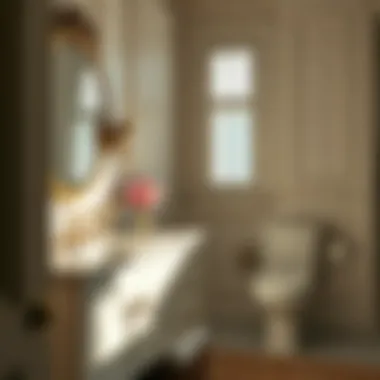
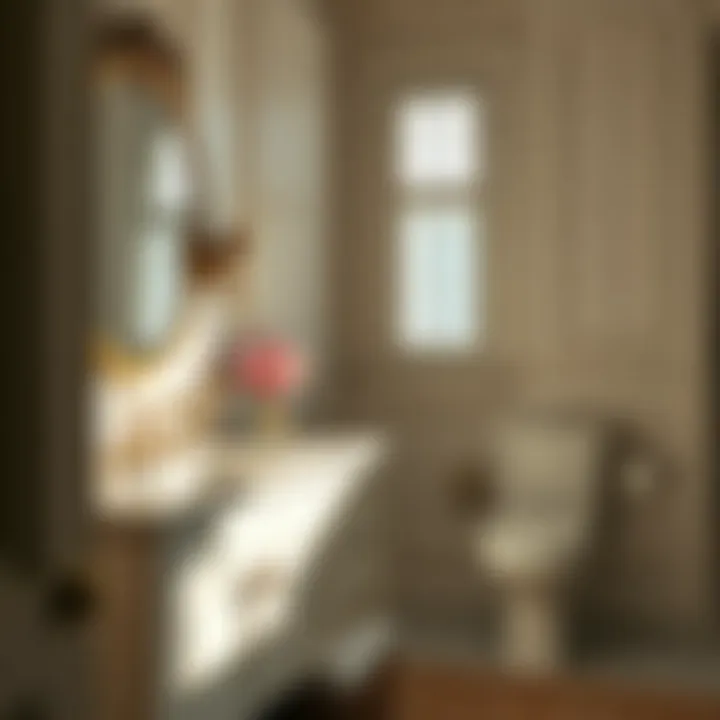
In this aesthetic, keeping surfaces clutter-free is vital. Pair the vanity with sleek mirror finishes and uniform lighting to enhance simplicity and calmness. You might want to integrate open shelving beneath the vanity to showcase neatly arranged toiletries or decorative boxes that also carry the minimalist vibe.
Maintenance and Care for Whitewashed Vanities
Maintaining whitewashed bathroom vanities is not merely an option; it is a necessity for preserving the beauty and longevity of such essential fixtures. Whether you're enamored by that fresh, coastal vibe or the warm embrace of rustic charm, a little upkeep can go a long way. Regular care ensures their aesthetics remain intact while securing their functionality over the years.
Regular Cleaning Practices
Keeping your vanity looking pristine involves adopting effective cleaning habits. Regular cleaning practices prevent dust buildup and stains, which can mar the finish. The wonder of a whitewashed vanity is in its ability to reflect light and create an aura of spaciousness in a bathroom. To maintain this aesthetic allure, establishing a cleaning routine is paramount.
Recommended Cleaning Solutions
As far as cleaning solutions go, many homeowners find natural options appealing. Solutions using vinegar and water are gentle yet effective, making them a favored choice for many. Their key characteristic lies in the ease of use—they won’t strip the finish or leave residues that could attract more dirt. Another popular solution is a mild soap mixed with warm water, which can cut through grime without being overly harsh.
One unique aspect of these recommended solutions is their low environmental impact. For individuals looking to reduce chemical usage, natural cleaners provide an effective route to maintain cleanliness without compromising health or the environment. However, one must take care not to overly saturate the material, as excessive moisture can lead to warping over time.
Cleaning Frequency
The frequency of cleaning depends on your use and how much traffic the bathroom sees. Ideally, a light cleaning should be done weekly, while more thorough deep cleans can be scheduled monthly. Not only does this practice help in keeping stains at bay, but it also allows you to catch potential problems early—like peeling paint or stubbon water spots—before they escalate into larger issues.
The advantage of this frequency lies in the balance it strikes: it’s manageable for most busy households but effective enough to preserve the integrity of your vanity. If guests have been over or if there have been spills, you might want to clean more frequently, ensuring the cabinet remains inviting and in prime condition.
Treatments for Longevity
The longevity of whitewashed bathroom vanities can be significantly enhanced with the right treatments. These practices can keep the finish and wood intact, creating a lasting investment that stands the test of time.
Protective Coatings
Using protective coatings is critical when it comes to whitewashed furniture. These clear finishes act as a buffer against moisture and other damaging elements, making them a wise choice for bathroom environments. The hallmark characteristic of these coatings is their ability to preserve the aesthetic without changing the look of the whitewashed finish.
Many vanities benefit from polyurethane or varnish, which can provide a water-resistant seal. One significant advantage is the ease of reapplication—just a light sanding followed by a fresh coat as needed can refresh a vanity and protect it further. However, one must consider the drying time and ensure adequate ventilation.
Repair Techniques
Occasionally, wear and tear are inevitable, but knowing some repair techniques can be a game-changer. Minor scratches can often be retouched using a white acrylic paint or a touch-up pen specialized for wood surfaces. This method is handier than one may think as it keeps the veneer looking seamless, extending its life and charm.
Additionally, if the finish starts to dull or rub off, you can refresh the surface with a fine sanding followed by a reapplication of the protective coating. This hands-on treatment often provides a renewed vibrancy. Still, it might not always yield professional results, so weigh your comfort level with DIY repairs versus calling in an expert, depending on the damage severity.
To wrap it up, regular maintenance and thoughtful care form the backbone of preserving the beauty and functionality of whitewashed bathroom vanities. Approaching this with diligence not only enhances your space's visual appeal but also helps ensure these fixtures remain robust and serviceable for years to come.
Challenges and Considerations
The allure of whitewashed bathroom vanities is undeniable, yet it is equally essential to recognize the challenges they entail. Choosing such vanities goes beyond aesthetics; it involves a balance between beauty and practicality, especially in a space where moisture and wear and tear are common. Potential buyers must weigh the benefits against specific considerations that can impact their long-term satisfaction.
Susceptibility to Damage
One essential factor to contemplate is the susceptibility of whitewashed finishes to damage. Given their lighter color palette, stains and scratches can stand out like a sore thumb. This sensitivity necessitates a certain level of care and precaution in usage.
- Water Damage: Frequent water exposure is part and parcel of any bathroom. If the finish isn't adequately sealed, it can be a prime target for swelling or warping, compromising the integrity of the vanity.
- Impact Scratches: Daily activities can lead to bumping and scraping. An accidental knock from a hairdryer or a toothbrush landing awkwardly can tarnish an otherwise pristine appearance.
To combat these risks, selecting a high-quality protective coating during installation can be a wise defensive strategy. Regular inspections for wear and tear can also help afford buyers peace of mind, ensuring a long lifespan for their prized vanities.
Color Fading and Maintenance Efforts
Another nuance that warrants attention is color fading. Over time, exposure to sunlight and bathroom humidity can lead to a muted finish, which can detract from the initial visual appeal that whitewashed vanities bring to the room.
- Sunlight Exposure: Extended exposure can result in uneven color fades, making one part of the vanity appear distinctly different from another. This can disrupt the harmonious flow of the space.
- Cleaning Products: The fate of the finish may also hinge on the cleaning supplies employed. Abrasive or overly harsh solutions can strip the surface, leading to a dull appearance and diminished vibrancy.
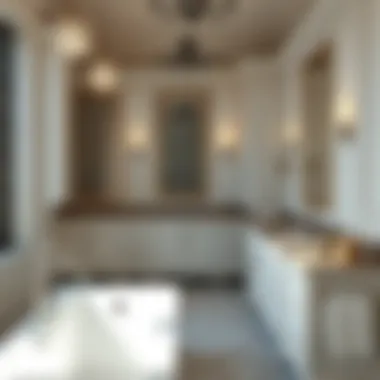
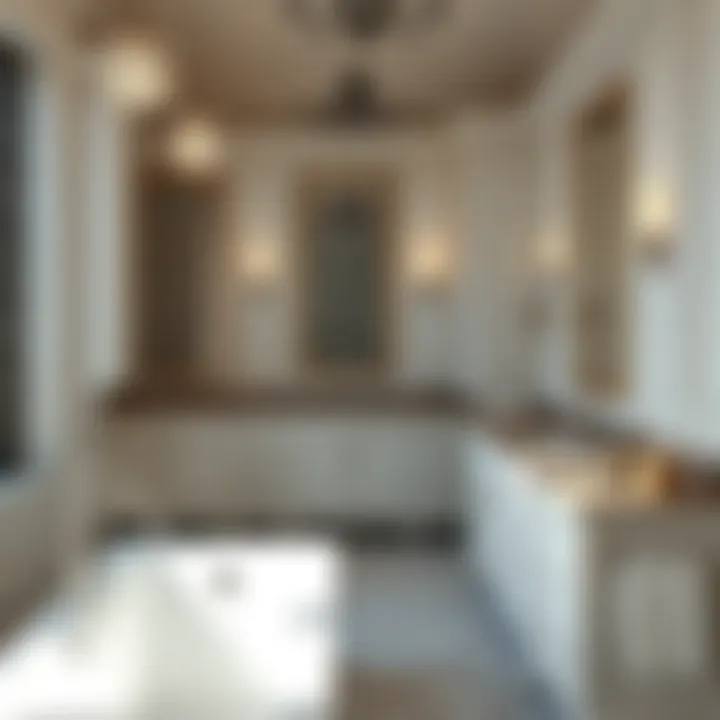
Maintenance routines must factor in these potential pitfalls. Regular, gentle cleaning with recommended solutions can extend the life of the surface. Moreover, applying a fresh coat or stain every few years can breathe new life into the vanity, ensuring it remains a focal point rather than a faded memory.
"A well-maintained vanity is the bedrock of an appealing bathroom, reflecting care and enhancing overall home value."
Ultimately, while the aesthetic allure of whitewashed bathroom vanities is significant, understanding and managing these challenges is crucial. Paying close attention to their maintenance needs will not only preserve their beauty but also contribute to a functional, enjoyable space.
Cost and Budgeting Aspects
When embarking on the journey to transform a bathroom, understanding the cost and budgeting aspects associated with whitewashed bathroom vanities is crucial. These costs can influence decisions related to design, materials, and even installation options. The charm of a whitewashed vanity lies not only in its aesthetic appeal but also in its potential to add value and functionality to your space. This section delves into the nitty-gritty of budgeting for your ideal whitewashed vanity, providing insights into materials and installation that will resonate with homeowners and design enthusiasts alike.
Price Ranges for Different Materials
Different materials used in whitewashed bathroom vanities come with disparate cost ranges. Here’s a breakdown to help you get a clearer picture:
- Wood: This is perhaps the most authentic material, which can vary widely based on type. Pine and birch might start around $300 for a basic model, while oak or cherry can soar above $1,000 for high-end pieces. Solid wood, known for durability, often increases the price.
- Composite Materials: Typically more budget-friendly, composite materials like plywood might set you back between $250 to $700. These materials often run the risk of being less sturdy than solid wood, but they are a popular choice for cost-conscious renovations.
- Laminate Finishes: If you're looking for an even more wallet-friendly option, laminate finishes can range from $150 to $500. While these don’t have the same longevity as wood, their ease of maintenance and wide variety of looks makes them attractive to many homeowners.
"Investing in bathroom vanities is about finding the balance between aesthetics, functionality, and what fits into your budget."
When choosing materials, consider not just the initial cost but also the longevity and associated maintenance these materials require. It’s wise to assess the trade-offs—spending more upfront on a quality wood vanity may save you future replacement costs.
DIY vs. Professional Installation Costs
The next important factor in budgeting for a whitewashed bathroom vanity is the installation method, which can significantly impact your expenses. Homeowners often grapple with the choice of doing it themselves or hiring professionals. Here’s a look at both options:
- DIY Installation: Tackling the installation of a vanity yourself can be an affordable route. Tools may cost around $100-$200, and depending on your skill level, you might spend a couple of hours to a few days on the project. The upside? You save on labor costs, which can be substantial.
- Professional Installation: Hiring a qualified installer can run anywhere from $200 to $600 depending on the complexity of the install and your local market rates. While this route incurs higher costs, it guarantees that the vanity will be installed correctly, which is essential for avoiding future issues such as leaks or misalignments.
Ultimately, if you're rather handy and have some experience under your belt, a DIY approach can be perfect for you. However, if you’re uncertain about your abilities or if the bathroom's layout poses particular challenges, investing in professional help might be more than worth it.
The Future of Bathroom Vanities in Design
As the home design landscape continues to evolve, bathroom vanities remain a focal point of innovation and style—especially whitewashed varieties. This shift not only reflects changing consumer preferences but also responds to broader societal trends like minimalism and sustainability. Understanding the future of bathroom vanities, particularly in the whitewashed aesthetic, offers valuable insight into how functional spaces can still be beautiful and on-trend.
Emerging Trends in Materials and Finishes
Today's market sees a growing fascination with unique materials and sleek finishes. One notable development is the incorporation of reclaimed wood into vanity designs, marrying rustic allure with contemporary style. This approach not only offers a charming nod to vintage aesthetics but also emphasizes environmental responsibility—a win-win, as they say.
Another trend that isn't going anywhere is the fascination with matte finishes. Rather than high-gloss surfaces, homeowners increasingly prefer softer finishes that deliver a more subdued elegance. This change adds an inviting quality to bathrooms, creating a calming space to unwind.
The color palette is also shifting. While crisp white remains a favorite, soft muted tones like pale gray or delicate beige are gaining traction. Such hues pair beautifully with whitewashed wood, allowing for versatile combinations that can adapt to changing tastes and redecorating efforts.
When it comes to maximizing space, floating vanities are taking center stage. Their design not only creates an illusion of a larger bathroom but also simplifies cleaning underneath, melding functionality with aesthetic appeal.
Sustainability Considerations
As environmental awareness becomes a guiding principle in home design, sustainability emerges as a crucial pillar in the future of bathroom vanities. Much of today’s consumer base prioritizes eco-friendly options. Many manufacturers now offer vanities constructed from sustainably sourced materials, minimizing ecological impact without sacrificing durability or style.
Moreover, water conservation is becoming a priority in bathroom designs. New innovations in faucets and sinks reduce water wastage while maintaining an aesthetically pleasing profile. Integrating such elements with whitewashed vanities can create a unified eco-conscious space that doesn’t compromise on style.
There’s also an increase in the use of finishes that are low in volatile organic compounds (VOCs). These finishes not only protect the wood but help ensure the air quality in the home remains healthy, further appealing to the environmentally aware homeowner.
As individuals explore ways to personalize their spaces, the emphasis will likely lean towards the combination of functionality, aesthetic appeal, and sustainability. Homeowners will increasingly seek designs that harmonize with their values and everyday lives, paving the way for a new era in bathroom vanity design.
The End and Final Thoughts
As we draw our exploration of whitewashed bathroom vanities to a close, it’s essential to reflect on the significance of this seemingly simple choice in home design. These vanities are more than just a fixture; they intertwine aesthetics and functionality in a way that enhances the entire bathroom experience. Choosing a whitewashed vanity offers a multitude of benefits, from creating a sense of serenity to amplifying light in even the coziest of spaces.
The appeal of whitewashed finishes lies not only in their visual charm but also in their adaptability across various design schemes. Whether one gravitates toward a coastal vibe or a rustic farmhouse aesthetic, these vanities provide a universal base that can harmonize with myriad styles. This versatility is a significant advantage for homeowners seeking to personalize their spaces without the burden of constantly changing key elements.
"The right vanity not only serves a practical purpose but also infuses life into a space."
Moreover, as we discussed in earlier sections, the materials used in construction and the various maintenance practices associated with whitewashed vanities must not be overlooked. It’s crucial to understand that a well-chosen vanity can endure the wear and tear of everyday life, making it a sustainable choice for the long haul.
Looking ahead, the future of bathroom vanities seems bright, with increasing trends toward sustainability and innovative materials. As more homeowners express a desire for eco-friendly options, whitewashed finishes may continue to evolve, catering to both aesthetic desires and mindful consumption. Thus, the final thoughts encourage individuals to embrace this trend and invest time in finding the perfect vanity that echoes their style and enhances their space.
There is a unique satisfaction that comes from curating a personal sanctuary. When thoughtfully chosen, whitewashed bathroom vanities can become focal points that radiate comfort, style, and tranquility in your home.















